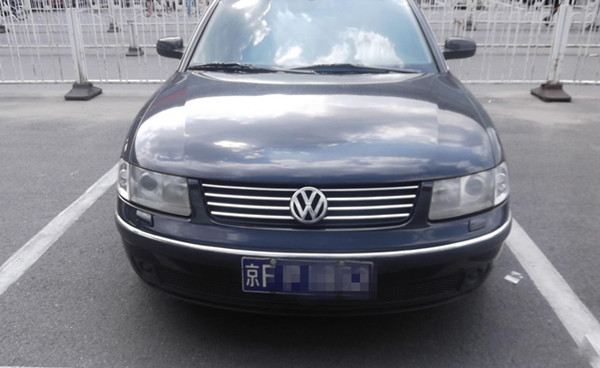The annual car license plate quota will be cut by 50,000 to be 100,000 since 2018 and the cut will last until 2020 to keep the total number of cars in Beijing under 6.3 million by then, Zhou Zhengyu, director of Beijing Municipal Commission of Transport described Beijing’s goal of easing traffic congestion on the Third World Metropolitan Transport Development Forum opened on October 24. As the forum went on, policies to reduce the use of cars were already going through the legislative process.

The increase rate of motor vehicles in Beijing slumped from 19.66 percent to 3.64 percent and was kept within 4.56 percent since the city started to control the number of cars in 2011. Motor vehicles increased only by 0.5 percent in 2015 because a batch of vehicles was removed from service under the new regulation on compulsory retirement implemented that year.
The increase rate of Beijing’s motor vehicles will drop again from 2018 on. For now, Beijing’s annual quota for car license plates is 150,000, among which 90,000 are for common cars and 60,000 for new-energy vehicles. The annual quota will be reduced to 100,000 from 2018. Meanwhile with a continuous rise in quota for new-energy vehicles, the odds of winning car license plates for ordinary cars may reach a new low.
With the increase of private new-energy cars, charging stations are also being promoted. So far 20 filling stations of Sinopec have been equipped with charging facilities.
More and more electric and new-energy buses and taxis will also be adopted by Beijing. It is predicted that the total pollutant discharge amount of motor vehicles in Beijing will reduce by 25 percent and the total auto fuel consumption will reduce by five percent in 2017 compared to those in 2012.
“With the optimization of transportation energy structure, residents will also change their travel modes,” said Zhou. By 2020, the green travel rate in Beijing’s central districts will increase to 75 percent while the rate of travelling by car will reduce to 25 percent, which will help improve the air quality of the capital.
Despite slower motor vehicle increase rate, the traffic performance index of Beijing had increased from 4.8 in 2011 to 5.7 in 2015 as 80 to 90 percent of the roads in central districts were already under planning. Experts claimed that the index had risen since 2015 duo to ingredients like ride-hailing services and lower fuel prices.
“Even during periods when odd-even license plate restriction was enforced the traffic performance index of the second ring and the third ring roads only dropped by 13 percent in spite of an average drop by half of the whole city,” Zhou added. According to him, the key to the problem is to cut transport demand at the source, make proper adjustments on urban layouts, reduce the total quota of car license plates and the frequency of car utilization, and avoid travelling in rush hours.
The road network of Beijing will also be improved. 91.7 percent of the 399-kilometer city expressways composed of four ring roads and 17 other roads have been completed by now. “Previously it took 850 work days for traffic congestion relieving projects to go through administrative procedures and now it only takes 150 work days,” introduced Zhou.
Source: english.qianlong.com



